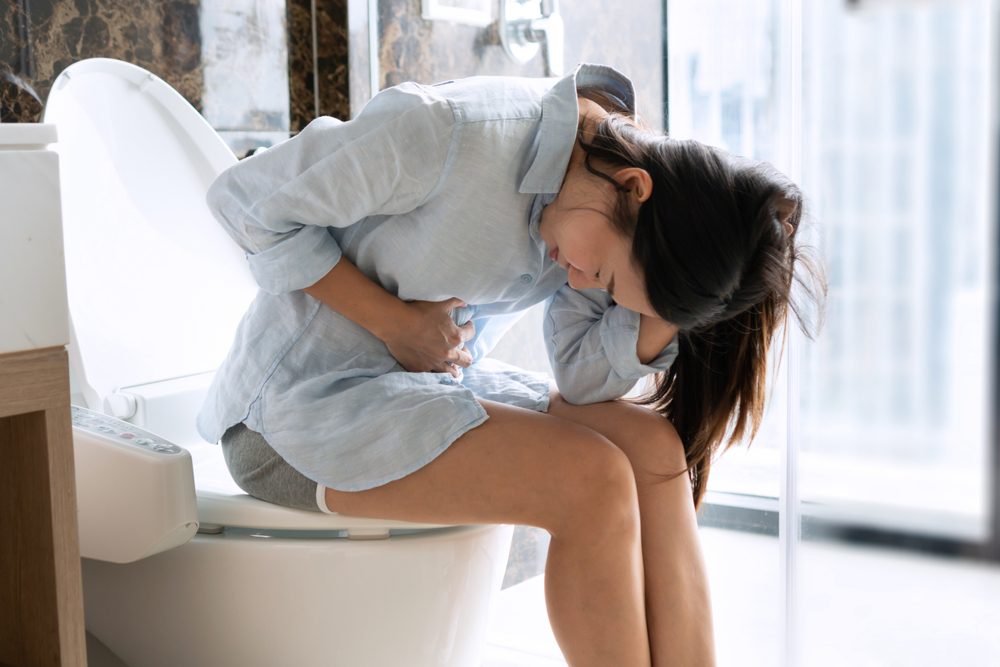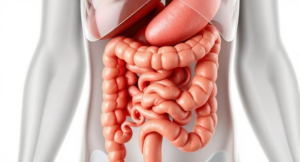As we all should know by now, the normal color of our feces is light to dark brown, but sometimes, stools might come in different colors. Every now and then, you might notice your bowel movements are green, yellow, black, orange, and even white.
It’s not so unusual to have brightly colored bowel movements, as Jamile Wakim-Fleming, MD, a gastroenterologist at the Cleveland Clinic, explained. Different colors are generally the result of dietary changes, like additives and even dyes that might not be digested properly.
Different color stools are quite normal, but frequent colorful poop might be a sign of a more severe health issue. For instance, pale and tan-colored stool might show a gallbladder, liver, or even pancreas problem. If you want to learn more about the color of your stool, this is the right article.

What is normal stool color?
The stool can be either dark or light brown, but all shades of brown are seen as a “normal” stool color. It’s not that uncommon for stool to change its color, generally due to a health concern or even different dietary causes. Treating the underlying cause or trying to adjust your diet might definitely help restore your stool color.
Bright Red
Possible causes: Your stool might get bright red due to a diet rich in beets and foods with red coloring. Alternatively, you might have bleeding in the lower gastrointestinal (GI) tract, generally due to an inflammatory bowel disease (IBD) or even hemorrhoids.
Black
Possible causes: If you ate black licorice, blueberries, or blood sausage, you might notice a black stool. Also, if you’re bleeding in your upper GI tract (stomach). Alternatively, if you take iron supplements, activated charcoal, or even drugs that have bismuth subsalicylate (Pepto-Bismol), you might also notice your stool is getting black.
Green
Possible causes: If you eat green-colored foods (like green leafy vegetables and green juice), or you have a diarrhea episode, this might cause food to more rapidly through the large intestine, hence the greenness of your stool.
Light/pale-colored
Possible causes: If you have a lack of bile, which is a fluid made by the liver, it might reflect in the stool, hence its light color.
Yellow
Possible causes: If you eat gluten, a specific protein found in grains such as barley, rye, and wheat, you might notice your stool is more yellow. Also, this might happen if you deal with malabsorption, which is generally caused by celiac disease, which leads to too much fat in the stool.
Poop color meaning
It’s totally normal for stool to change its color. These color changes generally appear due to the foods we integrate into our diet. All shades of brown and some shades of green are seen as “normal.” Brown is also oftentimes associated with the natural breakdown of bile in the GI tract.
Bile is made in the liver and it’s meant to break down fat. A poop that’s not brown or green shouldn’t automatically lead to a cause of concern. Any time there’s any kind of change in your stool color or its consistency – you could contact your healthcare provider and ask for more information. This goes even more if you are deeply concerned about your poop color and other symptoms.
Green
Green-colored poop might have something to do with your diet and how rapidly is food moving through your gut. Some possible causes might include:
- your diet – Green poop might be caused by something in your diet, such as green leafy vegetables or even green food coloring. You could even spot bits of vegetable roughage in your stool, like kale.
- Dumping syndrome – This syndrome shows up when food moves way too fast from the stomach to the small intestine, and it’s quite common after stomach or esophageal surgery.
- Gut motility – Green-colored poop could also be a sign that food is “visiting” the digestive tract way too fast without enough time for the bile to turn the stool brown. This might also be caused by diarrhea, besides dumping syndrome.
Orange
There are a couple of causes of orange stool, like:
- your diet – Beta-carotene is a well-known pigment that gives orange food its color. If you pay attention, you might notice orange-colored poop, especially if you’ve eaten foods rich in beta-carotene, like carrots, pumpkins, or even sweet potatoes. Foods with orange coloring, like candy and soda, might also cause your stool to turn orange.
- your liver health – A lack of bile production in the liver could cause your orange poop. But it’s worth noting that liver issues generally lead to white and tan-colored stool.
- the medications you take – Antibiotics and antacids that also have aluminum hydroxide could be the cause of orange-colored stool.

Yellow
The yellow-colored stool is seen as normal in infants, particularly if they are breastfed. Adults might even notice yellow-colored poop in a couple of situations, such as:
- celiac disease – Yellow stool could be a sign of celiac disease, especially if it’s more oily, greasy, and smelly than usual. Celiac disease is also an autoimmune disorder triggered by gluten, which damages the small intestine. If you’re willing to follow a gluten-free diet, you might be able to treat celiac disease and restore the color of your stool.
- diet – You might notice your poop changes its color after eating certain foods. For example, foods high in fat might cause your stool to appear pale and yellow.
- giardiasis – this is basically a parasitic infection caused by Giardia lamblia. People generally contract giardiasis right after eating contaminated water. This parasite can be found in soil and stool. Other symptoms can also include abdominal pain, fever, headache, and vomiting.
White or tan
Ok, this might sound a bit weird. Tanned stool? What’s that about, right? Well, it might be more serious than you’d think. Tan poop is generally the result of an issue with the biliary system, which also includes the gallbladder, liver, and pancreas.
The liver makes something known as bile, which is a yellowish-brown liquid that’s stored in the gallbladder. Bile is also released into the stomach, where it helps break down fats from the food you ingest.
A compound in bile called bilirubin helps give the stool its brown color. A lack of bile, which also implies a lack of bilirubin, might result in pale-colored stool. Many health conditions might reduce the amount of bile, such as:
- Alcoholic hepatitis – This is inflammation of the liver, which might come as a result of excess alcohol intake. Complications of alcoholic hepatitis also include liver disease, liver failure, and even malnutrition. You can easily treat alcoholic hepatitis by never drinking alcohol again.
- Biliary cirrhosis – This is a type of inflammation of the blue ducts in the liver, which can easily block the flow of bile. It’s not too clear what exactly causes biliary cirrhosis, but autoimmune disorders could also play a huge role. If you suffer from an autoimmune disease, the immune system might target by mistake healthy cells. Celiac disease, for instance, damages the small intestine in response to eating gluten.
- Biliary stricture – Shrinking the bile duct generally takes place as a result of gallbladder surgery. You can slowly develop a certain loss of appetite, jaundice (which is yellowing of the skin and eyes), and right-side abdominal pain.
- Cysts – A cyst is basically a benign (noncancerous) fluid-filled growth that mainly develops on the bile ducts and can easily block the flow of the bile. Some cysts go away by themselves, but others require surgery to remove.
If you found this article useful, we also recommend checking: These 11 Particular Foods Can Trigger Kidney Stones






